Key takeaways
- Emotional intelligence is crucial in education, enhancing self-awareness, empathy, and engagement among students.
- Students with higher emotional intelligence show better stress management, resilience, and collaboration skills.
- Integrating emotional intelligence into everyday teaching practices, such as discussions and role-playing, fosters a supportive learning environment.
- Practical strategies like emotional check-ins and mindfulness help students develop their emotional skills and improve classroom dynamics.
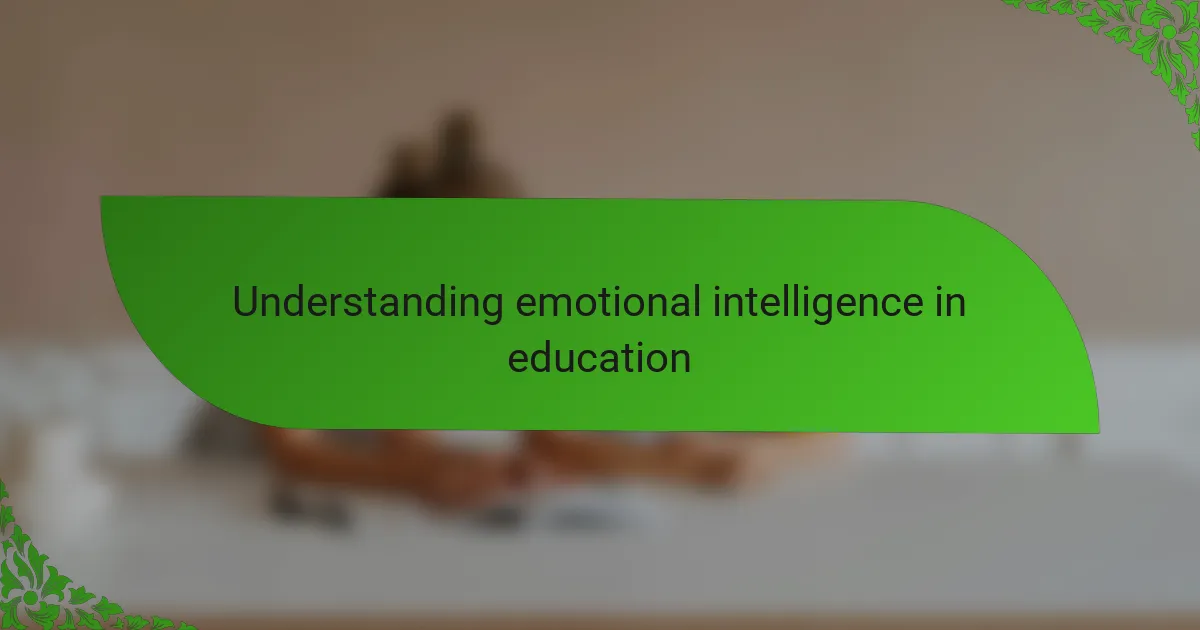
Understanding emotional intelligence in education
Emotional intelligence in education goes beyond just recognizing feelings; it’s about understanding how emotions influence learning and behavior. I’ve noticed firsthand how students who can identify their emotions tend to navigate school challenges with more resilience. Have you ever witnessed a student change their attitude simply by becoming aware of their feelings? It’s a powerful transformation.
From my experience, emotional intelligence provides a crucial foundation for self-awareness and empathy. These skills create an environment where students don’t just absorb facts but connect with the material on a deeper level. When I encourage students to express their emotions, I see their engagement and curiosity grow remarkably.
Isn’t it fascinating how something as intangible as emotional intelligence can shape educational outcomes? It reminds me that learning is not just cognitive; it’s profoundly emotional. Understanding this interplay has changed the way I approach teaching, making every classroom interaction an opportunity to foster emotional growth.
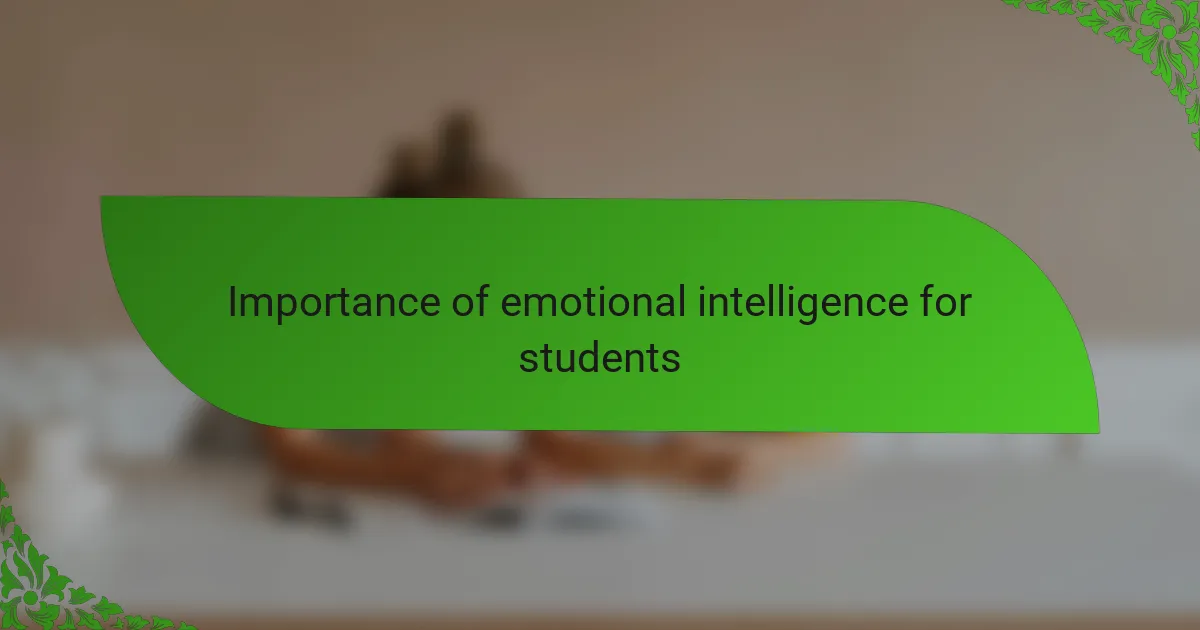
Importance of emotional intelligence for students
Emotional intelligence plays a vital role in how students manage stress and setbacks. I’ve seen students who struggle academically but excel in emotional regulation often bounce back faster, showing greater perseverance. Could it be that fostering emotional skills is just as important as teaching math or science?
In my time working closely with students, those with higher emotional intelligence tend to collaborate better and resolve conflicts with ease. It’s remarkable how a simple conversation about feelings can shift group dynamics from tension to teamwork. This social harmony directly impacts not just classroom atmosphere but overall learning success.
What truly stands out to me is how emotional intelligence builds confidence. When students understand their emotions, they approach challenges with a mindset of growth rather than fear. I’ve watched shy students transform into outspoken contributors once they felt emotionally supported—a change that academic achievement alone rarely sparks.
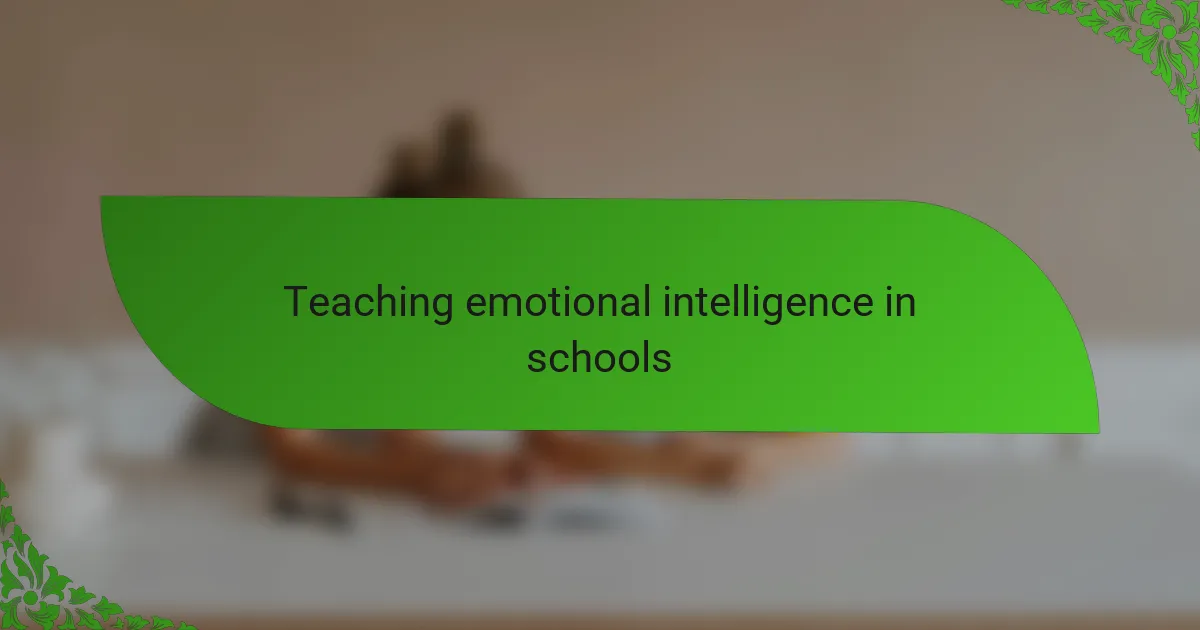
Teaching emotional intelligence in schools
Teaching emotional intelligence in schools requires more than just adding a lesson or two on feelings; it means weaving emotional awareness into everyday interactions. I recall a time when a simple check-in about emotions at the start of class opened up a dialogue that shifted the whole tone, making students more attentive and connected. Isn’t it amazing how acknowledging emotions can create a space where learning feels safer and more meaningful?
I often wonder how different classrooms would feel if every teacher embraced emotional intelligence as a core teaching skill. When I’ve introduced exercises that encourage students to reflect on their emotional responses, I notice subtle but powerful changes in their behavior—less frustration, more patience, even a greater willingness to take risks. These moments remind me that emotional intelligence isn’t an add-on; it’s a vital part of how students learn and grow.
From my experience, consistency in teaching emotional intelligence matters just as much as the content itself. I’ve seen that when emotional skills are practiced regularly—through group discussions, role-playing, or mindfulness activities—students begin to internalize these lessons and apply them naturally. Could it be that emotional intelligence, when nurtured day by day, becomes as instinctive as reading or writing? I believe it does.
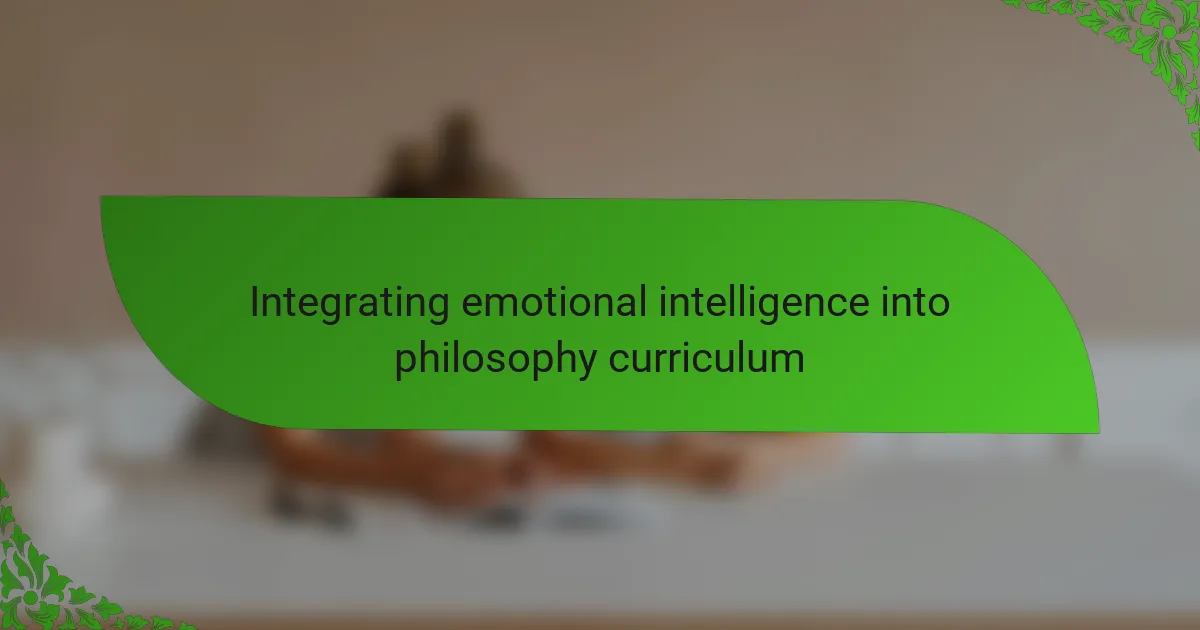
Integrating emotional intelligence into philosophy curriculum
When I first tried integrating emotional intelligence into the philosophy curriculum, I realized it wasn’t about tacking on extra content but about weaving emotional reflection into philosophical inquiry. For example, discussing ethical dilemmas became richer when students connected these issues to their own feelings and values. Have you ever noticed how a philosophical debate feels more alive when emotions are acknowledged, not just logic?
In my classes, encouraging students to explore their emotional reactions to philosophical ideas helped them develop deeper empathy and critical thinking. One time, a student struggling to articulate her thoughts found clarity after we took a moment to discuss how the topic made her feel. That moment underscored for me how emotional awareness can unlock intellectual engagement.
I wonder if philosophy education without emotional intelligence misses its fullest potential. By integrating emotional skills, I’ve seen students move beyond abstract concepts and embrace philosophy as a tool for understanding themselves and others. Isn’t that the ultimate goal of education—to nurture not just minds, but whole human beings?
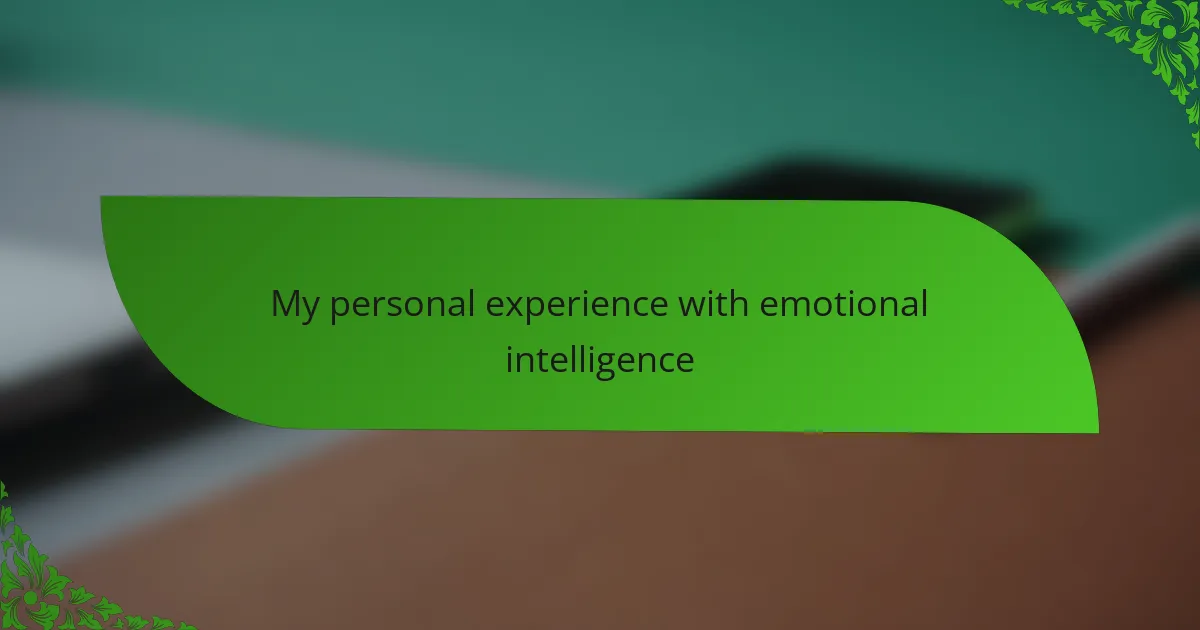
My personal experience with emotional intelligence
I remember one student who struggled to manage frustration during group projects. After we spent time discussing how different emotions affected their teamwork, I saw a noticeable shift—not just in their behavior, but in their confidence. It made me realize how powerful emotional intelligence is in creating real change.
Sometimes I catch myself reflecting on my own emotional responses in the classroom—how patience or empathy can diffuse tension before it escalates. Have you ever noticed how a calm, understanding response can transform a difficult situation? That awareness grew out of my experience with emotional intelligence and has become essential to my teaching practice.
One moment that stands out was when a student openly shared feeling overwhelmed by expectations. Instead of ignoring it, we talked through those feelings, and the relief in their expression was palpable. Those conversations remind me daily that emotional intelligence isn’t just a skill to teach; it’s a way to connect deeply with students on a human level.
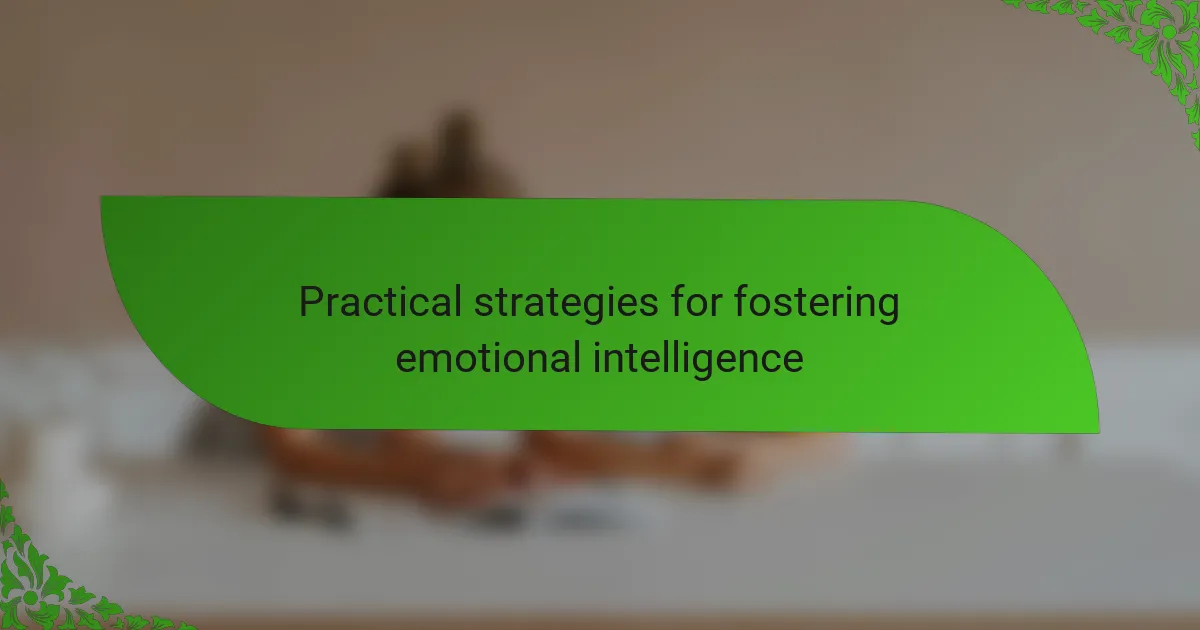
Practical strategies for fostering emotional intelligence
One practical strategy I’ve found invaluable is starting each day with a brief emotional check-in. Just a few minutes for students to name how they feel sets a tone of openness and self-awareness, which often leads to richer discussions and fewer misunderstandings. Have you ever tried this? It’s surprising how a simple question like “What’s on your mind today?” can unlock honesty and calm.
Another approach that really resonated with me involves using role-playing exercises to practice empathy and conflict resolution. Watching students step into someone else’s shoes not only builds understanding but also gives them tools to regulate their own emotions during tricky situations. From my experience, these activities make emotional intelligence feel tangible rather than abstract, which encourages genuine growth.
I also emphasize mindfulness practices, such as guided breathing or short meditation breaks, to help students pause and reset their emotions. When I introduced this in my classroom, even the most restless students seemed to gain a moment of calm that improved focus and cooperation afterward. Doesn’t it make sense that teaching students to manage their inner world can transform how they engage with everything else? I believe it does.